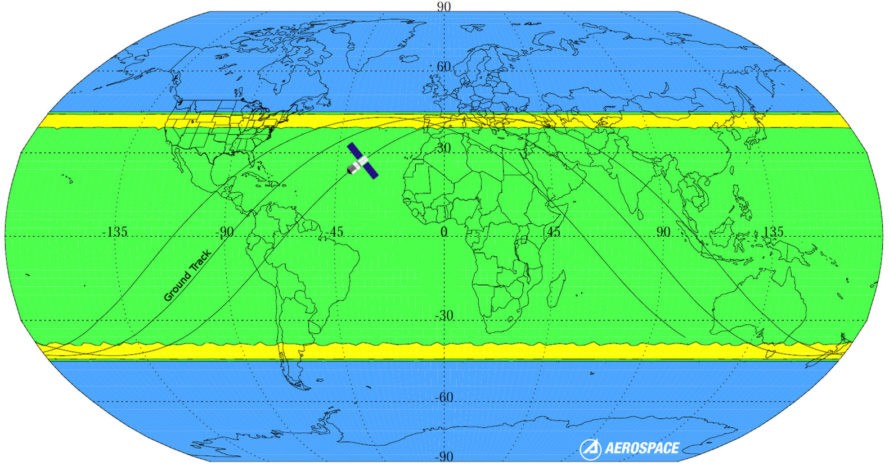 Chinese space station Tiangong-1 has been careering around space in an ever decreasing orbit and is expected to reconnect with Mother Earth between March 27 and April 8.
Chinese space station Tiangong-1 has been careering around space in an ever decreasing orbit and is expected to reconnect with Mother Earth between March 27 and April 8.This crash zone has been mapped out and there is a good chance that the debris will land somewhere in northern Portugal.
The Chinese authorities confirmed last year that they had lost control of Tiangong-1 (Celestial Palace) and that it would fall to Earth by April 2018.
As the impact approaches, the question remains – where? What is certain is that debris will be littered over a wide path 1,000 kilometres long, according to the Centre for Orbit Debris Studies (CORDS) which puts northern Portugal bang in the middle of the crash zone.
The boffins at CORDS claim that a person's chance of being hit by debris from Tiangong-1 is millions to one and helpfully point out that there are no records of anyone being injured by space debris.
This space station was launched by the Chinese in 2011 as part of its bid to become a superpower in space exploration, trying to emulate the United States and Russia.
Some of the structure will disintegrate on entering the Earth's atmosphere, the rest will continue, possibly spreading highly toxic and corrosive substances across the crash zone.
There are 13 agencies around the world monitoring Tiangong-1, which currently is 243 kilometres above the Earth’s surface. These agencies are sharing information to find out where and when the structure will fall but these are guesstimated at the moment
The European Space Agency (ESA) points to a period between 27 March and 8 April and say this will be the biggest object ever to re-enter the atmosphere without being under control and directed into the sea.
Unhelpfully, China has not disclosed details of the construction and materials used in the manufacture of Tiangong-1 so maximum care is being advised.
The aerospace sector has warned that the Chinese space station may contain a highly toxic and corrosive fuel called hydrazine in its internal tanks.
"Who knows what is on board Tiangong-1, and even what is made of," said Stijn Lemmens, ESA space debris analyst, advising, "For your safety, do not touch any debris that may be on the ground and avoid inhaling the vapours emitted," recommending that if anyone finds debris, that they report, "the location and time of sighting" and collect, "images and videos."























